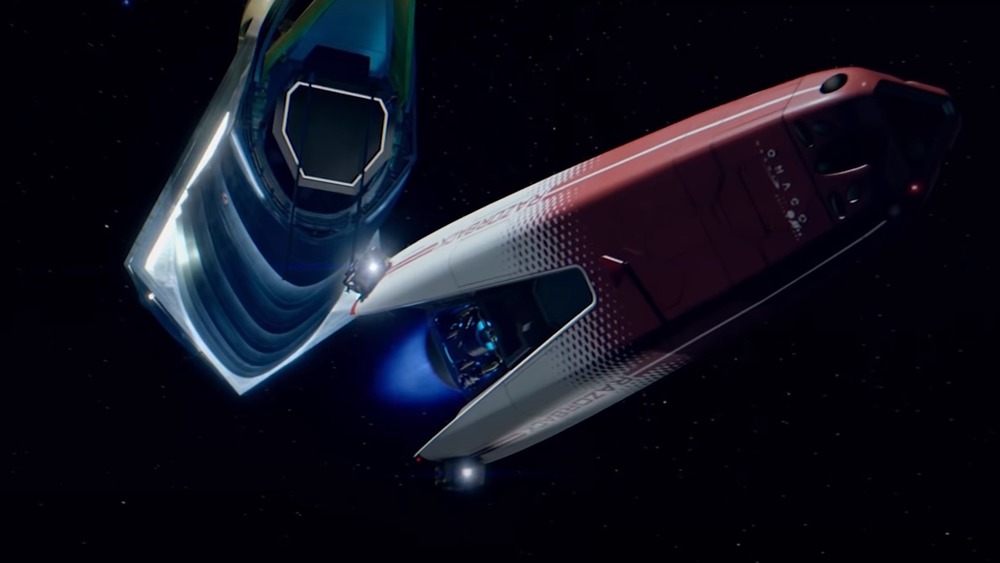The Razorback's Design From The Expanse Explained
It is a generally accepted fact that a science fiction universe is only as kickass as the spaceships that pinball around it. Star Wars wouldn't be worth bantha poodoo if the Millennium Falcon hadn't been designed to look like a killer Apple logo rather than, say, a plunger, or John Lithgow, or a block of swiss cheese.
In the case of The Expanse, there are few radder rides than the Razorback, the show's badass, high-velocity, interplanetary Bomb Pop. The Razorback is a racing pinnace, designed and manufactured by the good people at Proserpina Starworks before being heavily modified by Julie Mao. Until Mao got her hands on the ship, its particular make and model didn't get much clout. That all changed when she pulled the Expanse equivalent to making the Kessel Run in under twelve what-do-you-call-its, taking first place at the Parrish/Dorn 500K Circuit.
Since Mao's untimely passing, the Razorback has been flying under a new moniker, "The Screaming Firehawk," a callout to the fan base whose enthusiasm kept the show afloat after word of its cancellation hit the internet.
But that's all pretty general. For a real deep dive into what makes the Razorback tick, it's best to turn to the two groups who know the most about it: the creative team behind The Expanse, and the fan base that's kept the show flying for five-going-on-six seasons.
The Razorback: blink and you'll miss it
A collaboration between The Expanse's fan base and production team, Spacedock gives viewers a closer look than they could've imagined at some of the show's iconic vehicles. And man, do they have a lot to say about the Razorback.
Per their specifications, and as alluded to above, the Razorback was designed with one goal in mind: what Eleanor Roosevelt called "hot, nasty, badass speed." That's part of why the interior of the ship is so sparse – less mass to move means more vroom vroom. Its three main control thrusters, located at its rear, are specifically placed as far as possible from the Razorback's center of mass, which makes it crazy maneuverable, and its acceleration is described, maybe a touch hyperbolically, as being "limited only by the endurance of the human pilot."
Speaking of which, the stress of moving at speeds normally reserved for ancient Greek gods takes a toll on the body, so the Razorback's seats are designed to keep liquefaction to a minimum. Secured to the cockpit via gimbals and featuring advanced life support systems, they're the pilot's best bet in the war against turning into flesh flavored Silly Putty.
Putting aside the pinnace's sleek frame and iconic interior, one of its coolest design elements has to be the series of decals along its hull, featuring the silhouettes of vehicles from across aviation history: the Spirit of St. Louis, the Wright Brothers Flyer, and the first Epstein Drive ship all make an appearance. This is either a callout to the dreamers who came before, or a sobering tally of all of the craft that the Razorback crew has shot down during dogfights. Probably the first one.

